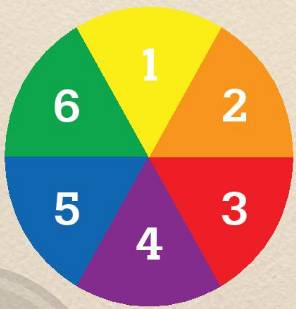BÀI 7. Read the passage and choose the best answer.
Artists use colour to create patterns. Colour can also show different moods. Bright colours make us feel happy and energetic. Dark colours make us feel calm or sad.The primary colours are red, yellow, and blue. They are the colours that can be mixed together to make different colours. Mixing two primary colours makes a secondary colour. The secondary colours are orange, green, and violet. Orange is made by mixing yellow and red. Green is made by mixing yellow and blue. Violet is made by mixing red and blue. Intermediate colours can be made by mixing two primary colours and a secondary colour together. Some intermediate colours are blue violet and red orange. Black, white, and gray are special colours. They are called neutral colours.
Colours have been organised into a colour wheel. It shows the three primary colours, the three secondary colours, and the six intermediate colours. Artists use the colour wheel to help them know which colours they want to use together.
- primary (adj): co bản - secondary (adj): thứ cấp
- intermediate (adj): trung gian - neutral (adj): trung tính
1. What is the passage mainly about?
A. Primary colours, secondary colours and intermediate colours
B. The ways to mix colours
C. Colour and its effects on our mood
D. Some basic information about colour
2. Which of the following is the correct way to make red orange from the three primary colours?
A. Mix red and yellow, then mix the new colour with red.
B. Mix yellow and blue, then mix the new colour with red.
C. Mix red and blue, then mix the new colour with yellow.
D. Mix the three primary colours.
3. According to the passage, white is a.
A. special colour B. neutral colour C. Both A and B D. None of above
4. Which of the following can't be found in the colour wheel?
A. Red orange B. Green C. Yellow D. Black
5. We can learn from the passage that.
A. happy and energetic people like bright colours
B. the colour wheel has 12 colours
C. we can also mix different colours to make the primary colours
D. artists are the best ones to know and use colour


Câu 1:A
Câu 2: B
Câu 3: C
Câu 4: D
Câu 5: D